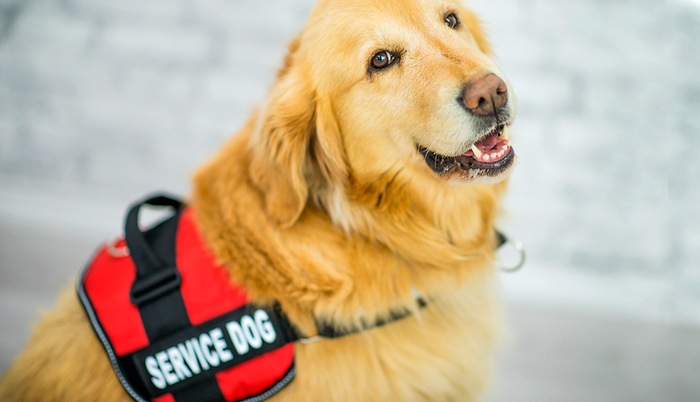

Service Animals- In layman’s terms, a service dog is trained for a person with a disability, and it has been trained specifically for that one person. The specific definition, however, is federally controlled. “Service animals are defined as dogs that are individually trained to do work or perform tasks for people with disabilities”.
Assistance Animals- The term “Assistance Animal” is legally defined under the Fair Housing Act as “...only dogs, and [they] further define ‘service animal’ to exclude emotional support animals”.
Guide Dogs- A Guide Dog, also known as a “Seeing Eye Dog,” is a certain kind of service dog, specifically, one that is trained for a person who is blind.
Therapy Animals- This is a confusing term because it sounds like the others, but it doesn’t actually confer any special rights. While a Service Dog is trained for one specific handler with a disability and the dog must perform at least one task for that person, a Therapy Dog is used by a group of people. You might see children reading to them in libraries, or they might visit elderly people in nursing homes or patients at a hospital.
Emotional Support Animals- An emotional support animal can be any animal that provides emotional support to its’ handler. This classification is not limited to just dogs; actually, quite the opposite. There are emotion support pigs, birds, cats, rabbits, snakes, and of course dogs. Airlines created the name for this classification but are in the process of cracking down on abusers who just want to bring their pet on board their flight.
A true service animal does not sit in a chair next to you at a restaurant and drool for food. An actual service dog will lay under the chair of its handler quietly. It will not beg or bark or want to play. Service dogs are trained to know that when they are wearing a vest, they are working. If you see a person with a dog that is wearing a vest, do not approach to interact with the dog. The dog is working and needs to focus on the needs of their handler, not the interactions of a stranger.
Emotional support animals are used for the most part by people with psychiatric disorders such as PTSD (Posttraumatic stress disorder). The animal calms the individual and can provide support when the person is distressed. There is very little if any training for an emotional support animal. Who’s to say that the animal is not a help to the person? Only the person truly knows if the animal is a support asset.
If you see a dog in a restaurant that has pulled up a chair and joined the guests for dinner, then chances are the dog is not a service dog, however many restaurants offer an outdoor area that does allow pets so keep that in mind. If you are offended by the presence of an animal in a restaurant that is blatantly not a service animal, you can complain to management. How they respond will depend on their policies regarding animals.
Halifax Humane Society has two Ambassador dogs that wear vests to identify them as therapy type dogs. They visit schools, assisted living facilities, business functions, events, etc., and interact with many children and/or adults. Although they are very well trained, they are not service dogs for the service they provide is not for one individual, but for a group of people.
If you would like these dogs to visit your school or organization, please contact Halifax Humane Society to schedule a visit. Remember, Don’t Shop, Adopt!
Previous Article
Next Article